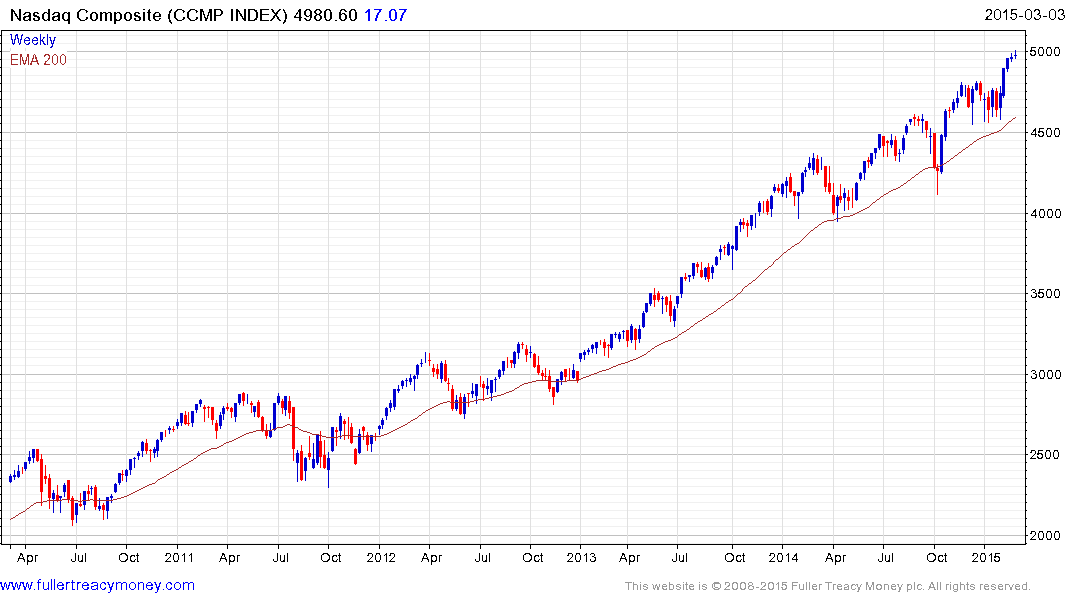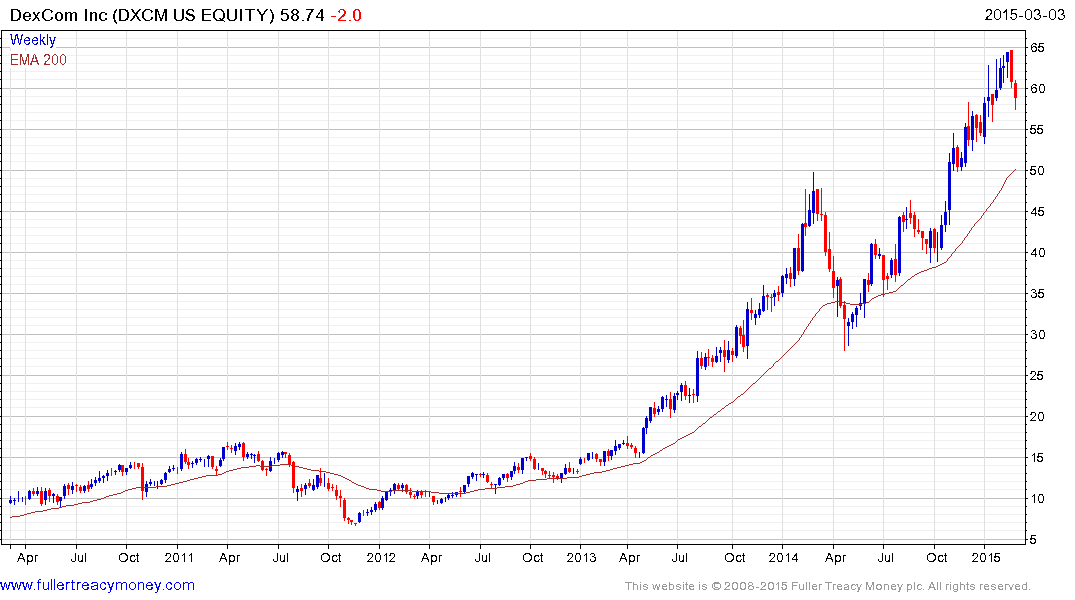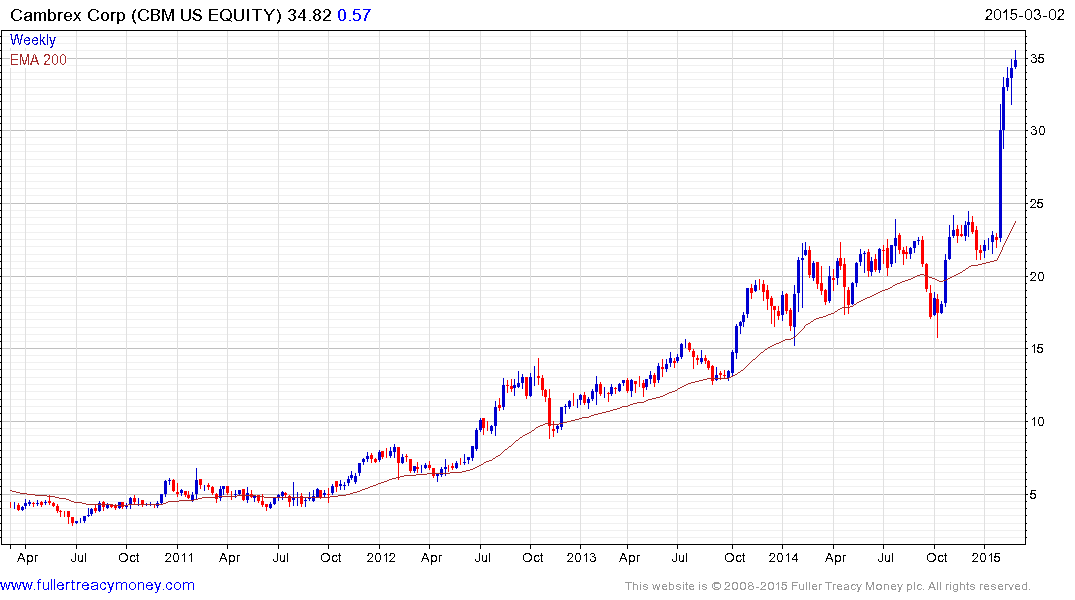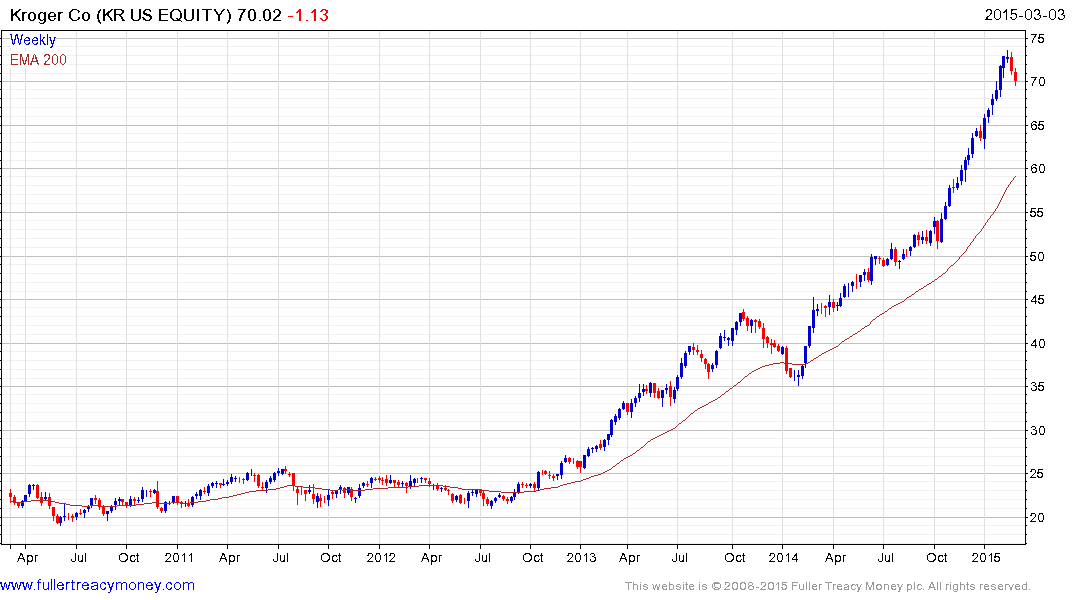Nasdaq 5,000: Bubble or not?
Thanks to a subscriber for this discussion from CNBC highlighting the fact that big round numbers are where investors tend to take stock of where a market is likely to go next. Here is a section quoting portions of the transcript:
The Nasdaq wouldn't be here if not for quantitative easing. It wouldn't be here without zero percent interest rates. It wouldn't be here without unprecedented stock buybacks fueled by cheap money," Peter Schiff, CEO of Euro Pacific Capital, told CNBC. "You have all these artificial props which have lifted up the market and there's no way to sustain the market without those props."
The Nasdaq index last touched 5,000 in March of 2000, marking the peak of the dotcom bubble's euphoria -- or what some called hysteria -- before the index crashed around 80 percent to a nadir of 1108.49 in October of 2002. It's been a long climb back to its 5008.096 close on Monday.
What bubble?But not everyone is convinced dotcom euphoria is making a revival. "I'm not a perma-bull. I'm very interested in shorting overhyped, overvalued stocks," Wayne Kaufman, chief market analyst at Phoenix Financial, told CNBC, citing bets against GoPro and Tesla. "I don't believe we are in a bubble and I think the fundamentals bear that out," he said, citing then-and-now data.
The Nasdaq Composite tested the psychological 5000 on Friday and is somewhat overextended relative to the 200-day MA. In addition to being a big round number this level is also in close proximity to the Index’s all-time high and is a logical place investors would pause and take stock, not least because the stock market has been rallying since 2009.

A bubble is a very special circumstance and reflects the final blow-off in an already well developed bull market. Therefore it would not be accurate to describe the Nasdaq today in the same terms as the condition that existed in the late 1990s. Valuations are not as cheap as they were a few years ago but there are nowhere near where they were in 1999. The majority of companies, particularly the large caps, have solid balance sheets and produce products there is a demand for.
There is no denying that the stock market has been fuelled by easy access to liquidity and that companies have been buying back ever increasing quantities of their shares. However capital is both global and mobile, so while the Fed is moving gradually towards normalising policy the rest of the world is ramping up easing measures.
Considering the proximity of a big round number the most likely scenario is that shares with the largest overextensions relative to their respective 200-day MAs, primarily in the biotech sector, are susceptible to consolidations of recent powerful gains.

For example DexCom hit at least a near-term peak last week and is now consolidating the gain from the September low.

Cambrex Corp is representative of a number of biotech companies. It jumped by 50% in the last month and is now susceptible to some consolidation.
![]()
NXP Semiconductor’s acquisition today of Freescale Semiconductor highlights the race to become the leading developer of Internet of Things products. The combined company will focus on mobile payments and the auto industry.

Elsewhere Kroger had rallied for 16 of the prior 18 weeks before hitting a near-term peak last week and is now susceptible to mean reversion.
Taking a step back and looking at the big picture, it would not be correct to describe the market today as a bubble but the evidence suggests we may be entering one.
Back to top


